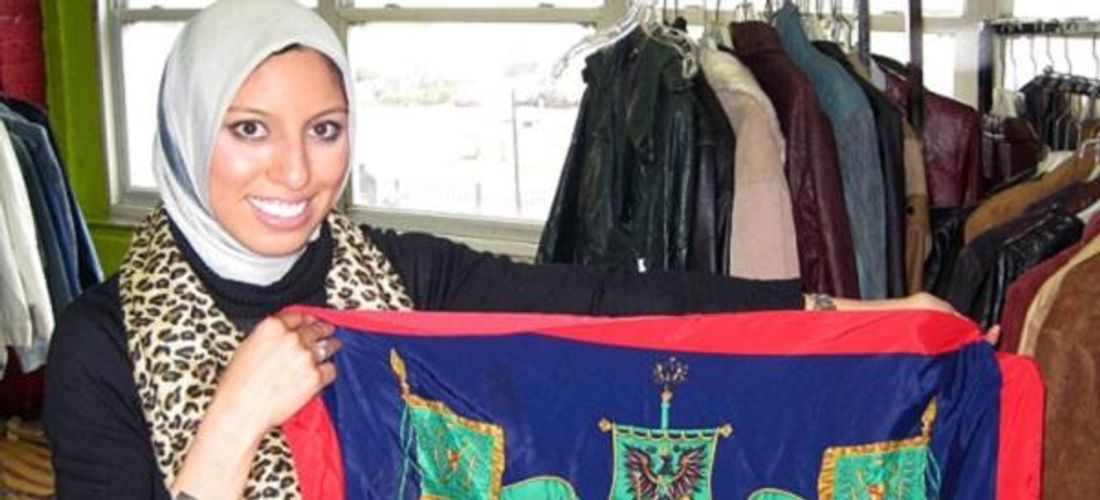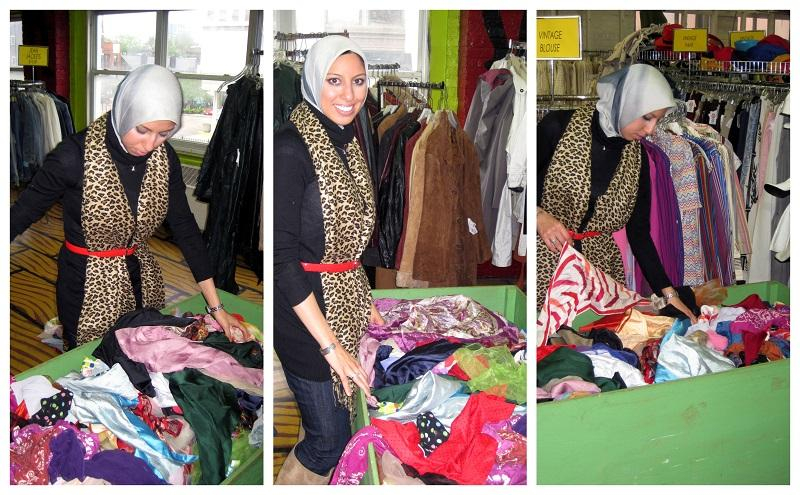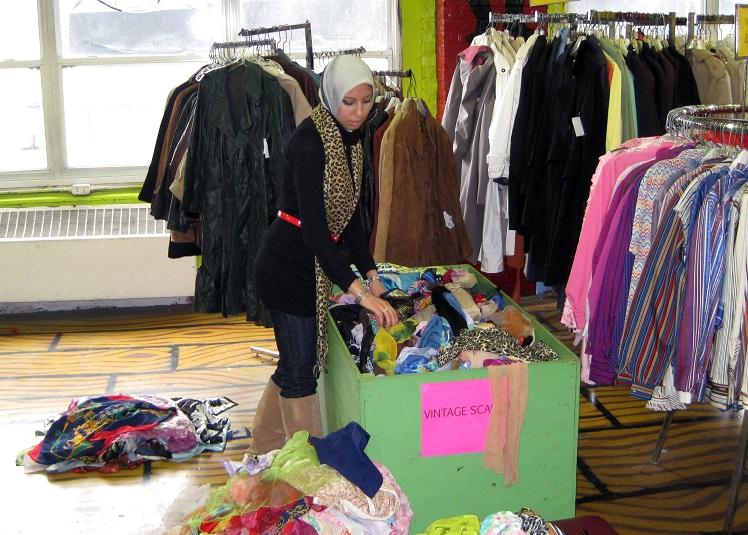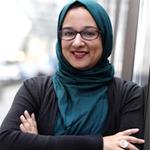Celebrating 10 Years – Melanie Gets Personal on HH's Origins & Our Heritage Collection
Fashion
|
Jun 26, 2019
|
10 MIN READ

The story of Haute Hijab and how this company came to be is as much entwined in the personal story of HH’s CEO Melanie Elturk as it is in the story of Muslim women - their sense of community, their interest in elevated modestwear and their desire to be the authors of their narratives and lives. Haute Hijab is now coming upon its 10 year anniversary – and what a cause to celebrate! What started out as a clothing and hijab company out of Melanie and Ahmed’s home is now a thriving hijab brand that is building community and uplifting Muslim women in numerous ways – starting with the hijab wearing process.
So, how do we celebrate such a monumental decade of work? With a collection of exclusively-designed for you, of course! We’ve created an a gorgeous, elevated, high-end Heritage Collection comprised of specially-designed silk hijabs that is the heart and soul of Haute Hijab – encompassing our origin story and Melanie’s (and our team’s) journey to bring HH to where it is today. Melanie and I had a beautiful and emotional conversation (that I share with you below) about the story of Haute Hijab and our new collection – how her start with selling vintage, high-end scarves repurposed as hijabs out of her home has led to where we are today, days away from the launch of our Heritage Collection!

Melanie and sourcing vintage scarves and finding an Hermes print in the early days of Haute Hijab.
Dilshad: Let’s talk about how Haute Hijab came to be – and what led you to go from selling vintage hijabs on the side to going for your dream and making it into a full-fledged business, more than a business in fact!
Melanie: Ahmed and I had decided to embark on this journey of this brand, and in those days we were committed to curating modest fashion clothing. This was back in 2010, when we created and incorporated our business. I wanted to create a line where you could look your age and be chic. If you look at that first line, you’ll see that it was elevated, formal and didn’t sacrifice style and modesty.
We were so concerned about the quality and the type of brand we wanted to put out in the world - that is should be elevated. You can find low-quality stuff everywhere. But what about quality? What about modest wear that also looks good and is stylish? We also wanted to sell formal wear. If you wanted to look really beautiful at like a mixed wedding - you could only find mother-of-the-bride stuff that was so dated, so frumpy.
So, we created this landing page that said “Haute Hijab – Coming Soon.” Then we created a Facebook page, and we let [the public] know that it would launch in the fall. That gave us about nine months to figure out how to do this. How do you manufacture a clothing line, and how do you launch it? My background and work was in law – I always had a design aesthetic and knew what I liked, but this was new to us.
Dilshad: So you have the concept and plan to start Haute Hijab, and it’s going to be a clothing line, and you’ve given yourself nine months to launch. What came next? How did it go from being a clothing line to a hijab brand?
Melanie: Keep listening to the story! So, it became clear that we would have to design [the clothing line] in-house – not buying things from overseas, because everything I was finding to source internationally was cheap quality while very expensive to ship to the U.S.
While we are working on this – because we said it was coming, and we are people of our word - I had the idea that we could make money to fund our clothing line by shopping vintage hijabs and using that as creative funding. We needed money, and we needed to keep our promise.
We knew hijabs were an issue for women. My hack for that was that I would go to vintage stores, hunt for designer scarves and wear them as hijabs. I was doing that 10 years prior to starting this business, starting in high school – it wasn’t anything new to me. And, I knew it would take off because [my hijabs] always received a positive reception. I started it local in Chicago, then I went to Detroit because I knew all the places [to shop]. I hand washed them in my bathtub and ironed every single piece, and we turned our living room into a photography studio. Ahmed would come home from a long day of work and start his second shift as a photographer.When we finally launched the first collection of hijabs – I still remember our first customer! – we completely sold out the next day! That was in the fall of 2010. The reception was so positive, and I was like, ok – I’m going to have to source more vintage scarves! We had to continuously replenish. I did a ton of research and realized Florida is a great place to get vintage because a ton of older people move to Florida and … their clothing passes on to sale.We went to Florida on a girls’ trip and found incredible finds – Chanels, Diors, Hermes. I found 400-500, and I shipped them home. I also found out that Toronto was the vintage capital of the world – everything from cheap thrift stores to high end stores. I went to the [Reviving the Islamic Spirit] conference and then went packed on one more day to go shopping and found another 400-500 scarves on that trip as well.Dilshad: Did you sell them weekly? Monthly?Melanie: There would be 30 every Tuesday, and I would wash them by hand, iron them, write product descriptions and post them on Tuesdays. That is where these Tuesday drops come from – it’s our legacy! Melanie sourcing vintage scarves in the early days of Haute Hijab.Dilshad: So was that the start of Haute Hijab as a hijab company? Did you stop focusing on a clothing line after that?Melanie: Well, [sourcing and selling vintage scarves as hijabs] continued for a couple of years until we moved to Dubai. In that time we released our clothing line. Then when we moved, that’s when vintage really came to a halt. The need was so massive that having only one hijab in each style was hard. It was already clear that we needed to source fabric so we could carry in more than one piece and still have that elevated, beautiful feel.
Melanie sourcing vintage scarves in the early days of Haute Hijab.Dilshad: So was that the start of Haute Hijab as a hijab company? Did you stop focusing on a clothing line after that?Melanie: Well, [sourcing and selling vintage scarves as hijabs] continued for a couple of years until we moved to Dubai. In that time we released our clothing line. Then when we moved, that’s when vintage really came to a halt. The need was so massive that having only one hijab in each style was hard. It was already clear that we needed to source fabric so we could carry in more than one piece and still have that elevated, beautiful feel. Rummaging through bins for vintage scarves. Sometimes Melanie would find 400-500 in one haul!Dilshad: What a great segue to talking about our Heritage Collection! Haute Hijab has come such a long way since those early days when you went hunting for vintage scarves to turn into hijabs. There are such timeless and beautiful groupings of hijabs created by the HH team – but this new product launch is a different.
Rummaging through bins for vintage scarves. Sometimes Melanie would find 400-500 in one haul!Dilshad: What a great segue to talking about our Heritage Collection! Haute Hijab has come such a long way since those early days when you went hunting for vintage scarves to turn into hijabs. There are such timeless and beautiful groupings of hijabs created by the HH team – but this new product launch is a different.

We actually started as a prints brand and didn’t move to solids until three or four years in. Prints were also our heritage, our legacy!
Dilshad: What was it about vintage scarves that appealed to you rather than trying to design or sew your own? Vintage style seems to resonate with you – what do you love about it?Melanie: There were so many reasons why vintage made sense. There is something about the artistry of yesterday. I was drawn to 40s and 50s, those really beautiful classic prints. Even in the 80s and 90s these designs and prints were duplicated. Today, we just don’t operate on that level of artistry.Dilshad: Tell me about some of the classic hijab designs from those vintage rummaging days that you really loved or looked for. What were big finds for you? What appealed to you?Melanie: Certainly anything designer! Anytime I found a designer or luxury scarf - that was a God send! It was like – is this real? And then that eternal struggle – should I keep this or should I sell it? I wanted to keep them so bad, but I didn’t!There were certain types of prints I was looking for. Chain links – those sold the fastest. Also these graphic, abstract prints – there was a beautiful graphic image and the colors would just flash, and it would look so beautiful as a headscarf.I was always looking for the vintage, classic prints. That’s what this [Heritage Silks] collection is – it’s an homage to these beautiful prints. When Gizelle (our creative director) and I were designing it, I pulled up all the archives from those years, took elements and colors that I loved and and infused them with Islamic elements.The story of the Heritage Collection comes from our going back to those days of sourcing vintage scarves.

What does that word “heritage” mean to you? How does this new collection tie back to the origin story of Haute Hijab?
Melanie: There was a lot of internal discussion about if we should use the word “heritage.” I feel strongly about it for a few reasons: From a brand aspect, we’re entering into our 10th year of operations in 2020. And, I am so blessed with what we have become. But, I don’t want to forget our early days, our heritage – that this story we started about the promise of making the lives of Muslim women [who wear hijab] better through whatever product [they wear] – I always want it to live on.I think one of the things we [as a community] are suffering from right now is an inferiority complex about where we come from and who we are. We’re not always excited to own where we come from – the food we eat, the language we speak, what we wear. We aren’t fully confident in who we are – like I remember when my brother was embarrassed when my sister would come to his soccer games in hijab.Dilshad: I so get you. This was something that I thought would end with my children, or at least greatly diminish. And yeah, it has to an extent – my kids and others like them are way more confident and unapologetic about who they are. But, that inferiority complex still lives in them. I see it in how they sometimes envy how non-Muslims dress or try to vanilla-fy aspects of their faith or cultural heritage. It surprises me when this rears up. I think – Still? This is still a thing?Melanie: It kills me when anyone is embarrassed about who they are instead of owning who they are and carrying this incredible heritage every day. They’ll try to diminish it and say – well, no, I’m just as American as you are. Part of being American is celebrating that we come from different places and that we don’t all have to be alike, because this isn’t a homogenous melting pot. This is a beautiful cultural mosaic of religions, races and heritage.Dilshad: Heritage is such a deep, important word. Our heritage, where we come from, is important to so many of us as we forge our identities and live our lives. This word must’ve been chosen carefully for this product line.Melanie: That was the initial gut word that we wanted to call the line, and in an internal conversation we had, some people felt that the word heritage [was not right] - especially with prints that, at first blush, look like Eurocentric motifs. But what we don’t realize as Muslims is that a lot of what we think is Eurocentric design is actually rooted in Islamic design. When we see a brand’s monogram and it’s tessellated, for example, that’s coming from our deen, our rich history in the arts and that pattern repeated over and over again.When you look at the Gucci logo or even Louis Vuitton – the way that it’s replicated in that specific geometric pattern is actually incredibly Islamically influenced – you see it in our history and architecture way before you found it in Europe. So what our mind thinks is Eurocentric - like wait. Take a step back and actually think about that.That was a huge realization I had particularly when I traveled to Spain (in 2014). I went to Alhambra and Granada, and I saw motifs that I assumed were European in their heritage, like herringbone and houndstooth. But where did those geometric patterns come from? The Islamic world.
So, not only do these [Heritage Silks] print patterns have Islamic art elements that aren’t even acknowledged, we also put in overtly Islamic symbolism, from tassels and prayer beads to crescent moons to those tessellations. We were intentional in doing so, but also not overdoing it, because we wanted it to be subtle and beautiful. That’s why “heritage” made sense to me. I want to empower our community to own our heritage.
Dilshad: How much of this Heritage Collection is you?Melanie: It’s very personal for me. The Luxury Collection was truly Gizelle and an expression of her. The Ultimate Underscarves were an incredible innovation that our community needed to see. For me though, I’m most excited about THIS launch because of the history that it holds within our company – that nod to where we started and how far we’ve come.I never in a million years, when I was going though those dusty scarves, thought that I would be designing them at this scale, this level of beauty and art. It ties up in a bow - where we started to where we are 10 years later.
Dilshad: Do you have a favorite among the five hijabs in the Heritage Collection?Melanie: Every time I have a favorite, there’s another one I like. They all have a special place in my heart in an artistry way or a sentimental way. I think that the crest [design] is very special to me because it reminds me of that journey I took in Spain and that epiphany I had about Islamic style of art. And, to see our logo tessellated, that’s so special – it couldn’t be more Islamically driven. I also think about the pastel hijab in the line – that color for me is so bright and beautiful and unapologetic. Like, Yes! – this is my hijab.I love the bold statement this collection makes to the world. It takes a special person to wear it with confidence!
Subscribe to be the first to know about new product releases, styling ideas and more.
What products are you interested in?

